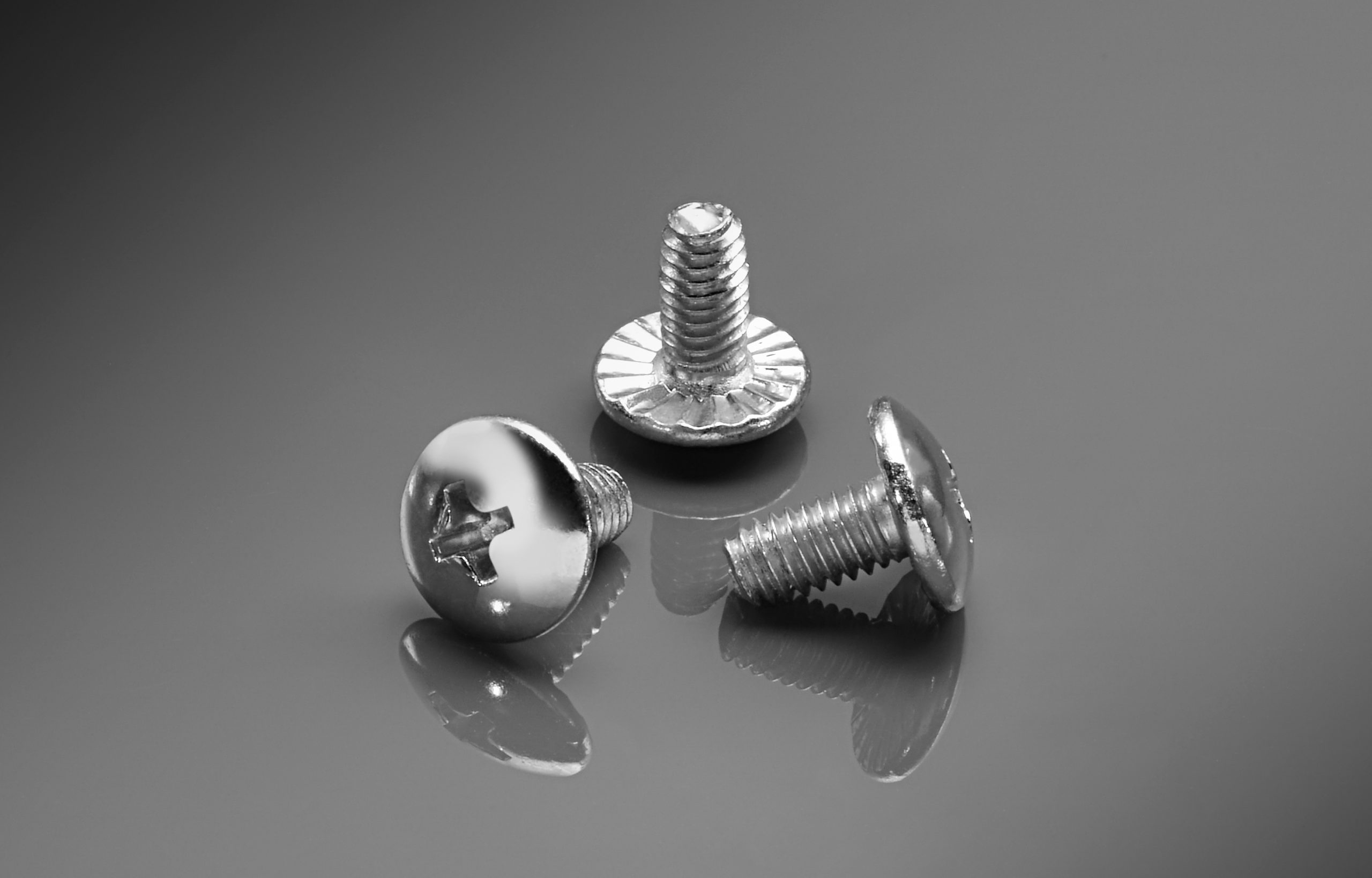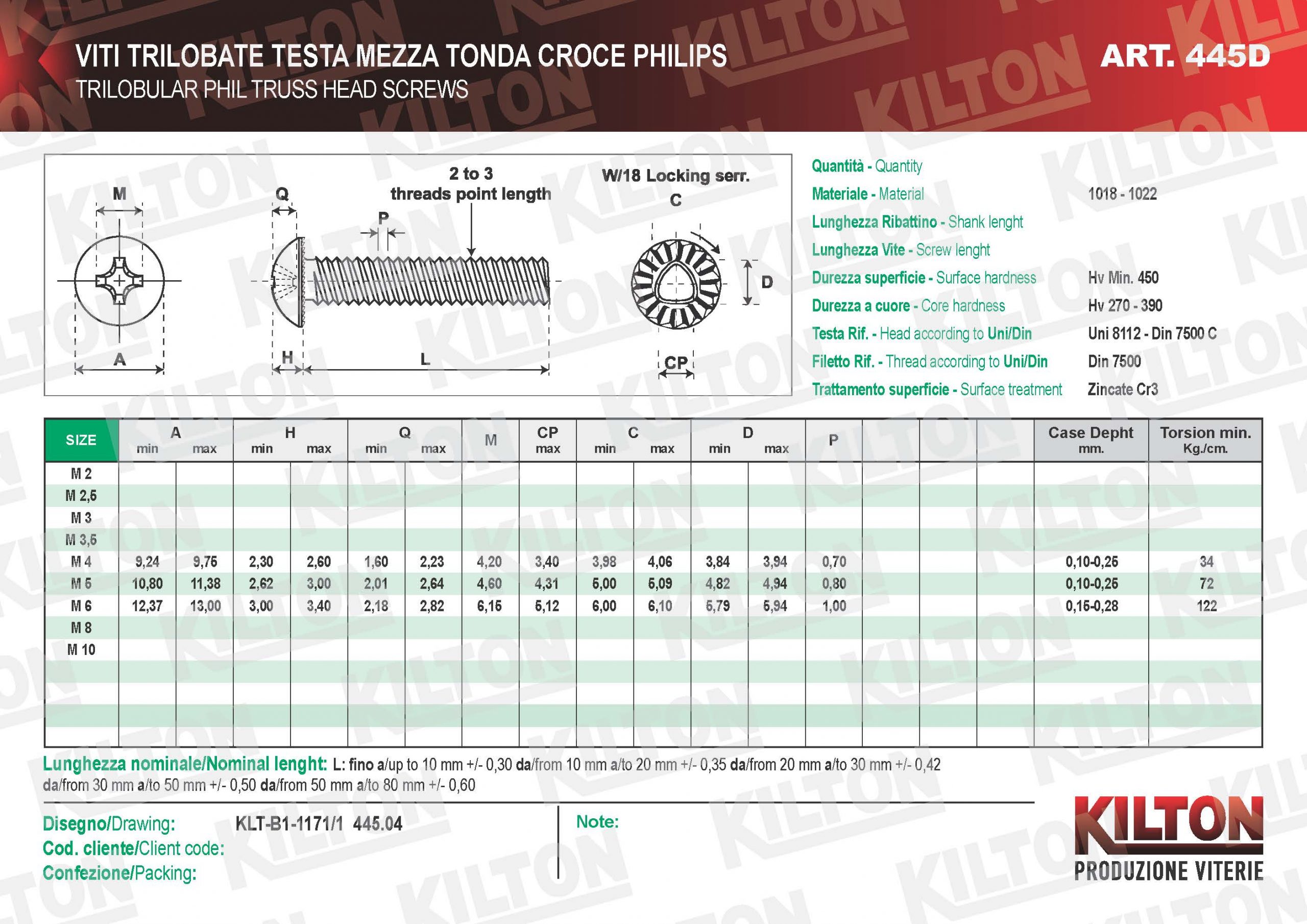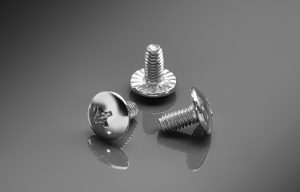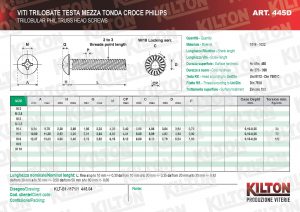445D
On this screw the knurling does not improve the tightness of unscrewing as, as already indicated, the absence of play between screw and nut due to a technically free of shaping creates a blocking action. The underhead knurling, however, has two distinct functions. Once the screw has been tightened, the indentation causes the unscrewing torque used to be greater, making the fixing more stable in all those applications which are subjected to movements and / or vibrations during their use. In the electric field, however, the indentation scrapes the surface of the metal, effectively creating connectivity with the material where grounding is required.
However, it must be taken into account that the serration can never replace the quality of the tightening of a screw with the serrated washer, in itself much more performing.
The length of the screw is measured from the tip to the underhead.
TAPTITE SCREWS HAF ROUND CROSS PHILIPS IMPRINT WITH SERRATION
The self-forming trilobular screw is a triangular section screw with metric thread suitable for direct screwing in blind or through holes. Its main feature is to avoid the threading phase in steel and light alloy products. During screwing, this screw forms the thread plastically, i.e. by deforming the material, thus creating a play-free coupling between screw and nut, thus guaranteeing optimal fastening with high resistance to tearing and unscrewing due to the vibrations of use. The creation of the thread in this condition avoids the formation of shavings, a feature particularly required by several regulations concerning threads on blind holes. Regardless of the length of the screw, the efficiency of this thread is expressed in the first 20 / 25mm only starting from the tip. The presence of a longer thread length does not affect the screw's sealing capacity. The utmost attention must be paid to the holes or die-casting pins that will be used for the creation of the holes: an incorrect hole even if only five cents can in some cases radically change the tightness of the screw. It should also be said that not all the tables in circulation are correct for the use of the screws in question; this situation was created following the regulatory grouping of various types of self-forming screws, which however had different characteristics and therefore different holes of use. From our long and affirmed technical experience we can maintain that the hole suitable for any type of use is four or five tenths maximum smaller than the nominal diameter of the screw; in case of die-casting, a maximum taper of one degree must be calculated. Different tapers can create problems during particularly heavy tightening, as they interfere with the regulation of the screw: it can in fact have a forming part of four times its own pitch. Our trefoil screws, in addition to the galvanic treatment according to RoHs regulation, are subjected to a lubrication treatment, necessary to reduce the screwing effort by 30%.





